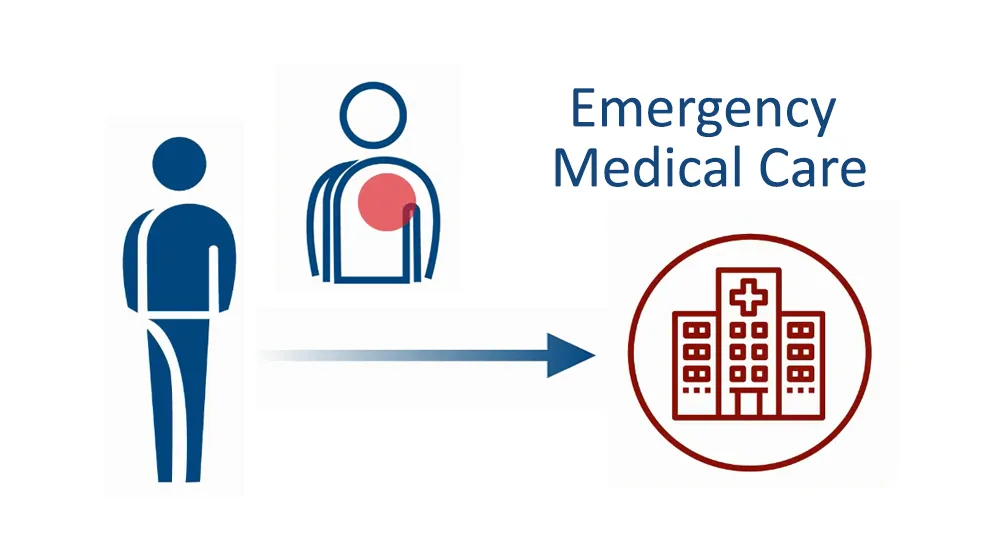Urgent Care in Fresno: High-Quality Medical Services without the Wait
Urgent Treatment: Linking the Void In Between Medical Care and Emergency Clinic
Urgent treatment centers have actually arised as important elements in the healthcare continuum, properly dealing with the demands of clients who require immediate medical focus for non-life-threatening problems. By giving services beyond common office hours and accommodating walk-in people, these centers play a vital function in reducing the stress on emergency clinic. The landscape of urgent care is complex, with distinct distinctions from both key care and emergency solutions. Comprehending these subtleties can dramatically impact person outcomes and healthcare efficiency, motivating further expedition right into just how urgent care can improve the future of medical accessibility.
What Is Urgent Treatment?
Urgent care stands for a critical part of the healthcare system, providing immediate medical focus for non-life-threatening problems that need timely intervention. These centers are made to bridge the gap between main care providers and emergency situation departments, enabling clients to obtain timely treatment without the lengthy wait times commonly connected with emergency clinic.
Immediate treatment centers generally operate outside of standard office hours, suiting people during weekend breaks and nights. They are staffed by healthcare experts, consisting of medical professionals, nurse practitioners, and medical professional assistants, that are educated to detect and deal with a large range of medical problems - urgent care fresno. Typical problems dealt with at urgent care facilities include minor cracks, strains, infections, allergies, and minor cuts calling for stitches
The accessibility of immediate care solutions has made them a popular choice for people looking for instant remedy for severe clinical issues. This design not only minimizes pressure on emergency departments however additionally advertises a more effective use medical care resources. By providing a convenient option for non-emergency circumstances, urgent treatment plays a vital role in improving general client treatment and improving health and wellness outcomes for areas.
## When to Make Use Of Urgent Treatment
When to use immediate treatment can dramatically influence patient results and source allocation within the medical care system,Recognizing. Immediate care centers are developed to address non-life-threatening medical issues that need prompt interest but do not demand the resources of an emergency clinic.
Individuals need to take into consideration visiting immediate treatment for conditions such as small fractures, strains, cuts requiring stitches, and moderate to moderate diseases like influenza symptoms, infections, or sensitive responses. Furthermore, immediate care is appropriate for analysis solutions, such as X-rays and laboratory tests, which can offer prompt outcomes for typical ailments.
It is crucial to identify in between circumstances that warrant urgent treatment and those that require emergency situation solutions. Severe injuries, upper body discomfort, difficulty breathing, or indicators of stroke need to motivate immediate emergency area check outs. Recognizing these differences can bring about a lot more reliable use medical care resources, decreasing delay times in emergency departments and making sure that those in critical demand get prompt interventions.
Benefits of Urgent Treatment
Accessing immediate care supplies many benefits for patients seeking prompt medical interest. One of the key advantages is minimized waiting times compared to standard emergency clinic. Urgent care centers are created to accommodate individuals with non-life-threatening problems, enabling quicker medical diagnosis and treatment - urgent look what i found care fresno. This effectiveness not just enhances patient complete satisfaction but also minimizes the burden on emergency situation services.

Cost-effectiveness is an additional substantial advantage. Immediate care sees generally incur lower out-of-pocket costs than emergency clinic brows through, making it a more financially practical option for patients. Numerous urgent care facilities accept a vast array of insurance policy strategies, further reducing the financial worry.
Additionally, immediate care centers are outfitted to deal with a variety of conditions, from small injuries to common health problems, giving thorough treatment in a solitary area. This multi-faceted strategy not just improves the person experience however also fosters continuity of care, improving overall health outcomes.
Distinctions From Medical Care
Usually forgotten, the differences between immediate care and medical care are essential for clients navigating their medical care alternatives. Immediate treatment centers primarily resolve immediate, non-life-threatening clinical concerns that call for prompt interest, such as minor injuries, infections, and diseases. These centers typically operate beyond regular office hours and do not call for appointments, making them a practical selection for clients that need fast help.
In contrast, health care providers concentrate on comprehensive, recurring health administration. They develop long-term relationships with individuals, looking after preventive treatment, persistent disease management, and routine health and wellness testings. Main care emphasizes continuity of care, permitting individualized therapy plans and in-depth health evaluations that urgent treatment settings can not offer.
Furthermore, health care medical professionals usually coordinate referrals to professionals and keep thorough clinical histories, which is vital for taking care of intricate health and wellness problems with time. While urgent care can successfully address severe concerns, it must not replace the click here for more info foundational duty of main treatment in total wellness administration. urgent care fresno. Understanding these distinctions aids clients make educated decisions about where to look for treatment based on their details health demands
Distinctions From Emergency Clinic
Clients sometimes discover themselves unclear regarding when to check out an immediate treatment facility versus an emergency clinic. Understanding the essential differences can help in making the right choice for their medical care needs.

In contrast, emergency rooms are furnished to manage serious and critical problems, such as serious trauma, cardiac arrest, or strokes. Clients experiencing signs and symptoms that present an instant threat to their health and wellness must look for care at an emergency clinic. Emergency situation divisions are staffed with specialized clinical personnel and possess sophisticated diagnostic devices to take care of complex situations.
One more significant difference exists in the cost and wait times. Urgent treatment check outs have a tendency to be much more budget-friendly and entail much shorter wait times contrasted to emergency clinic, which usually experience high person quantities. Eventually, recognizing these distinctions encourages clients to make educated decisions, guaranteeing they receive proper and prompt treatment.
Final Thought
To conclude, urgent care serves a vital function in the medical care system by offering timely clinical interest for non-life-threatening conditions. Its access, extended hours, and cost-effectiveness setting it as an important source for patients looking for instant treatment. By successfully connecting the gap between key care and emergency solutions, urgent care centers assist to minimize the strain on emergency situation departments, ensuring that clients receive reliable and ideal therapy without unneeded delays.
The landscape of immediate treatment is complex, with unique distinctions from both primary care and More Help emergency situation services. By offering a hassle-free choice for non-emergency situations, urgent care plays a crucial duty in enhancing general client care and boosting health and wellness end results for areas.
Often ignored, the distinctions in between urgent care and primary treatment are vital for patients browsing their healthcare alternatives. Main treatment highlights continuity of care, allowing for individualized therapy plans and in-depth health evaluations that urgent care settings can not offer.
By effectively connecting the gap in between primary treatment and emergency situation solutions, urgent care centers help to alleviate the pressure on emergency situation divisions, making certain that people get appropriate and reliable therapy without unneeded hold-ups.